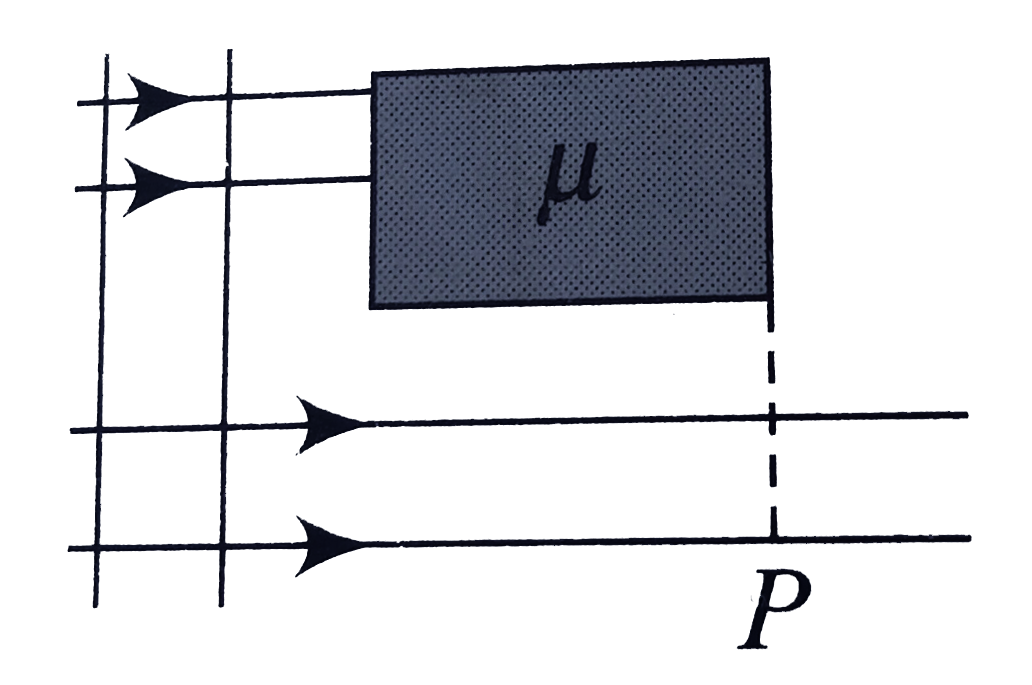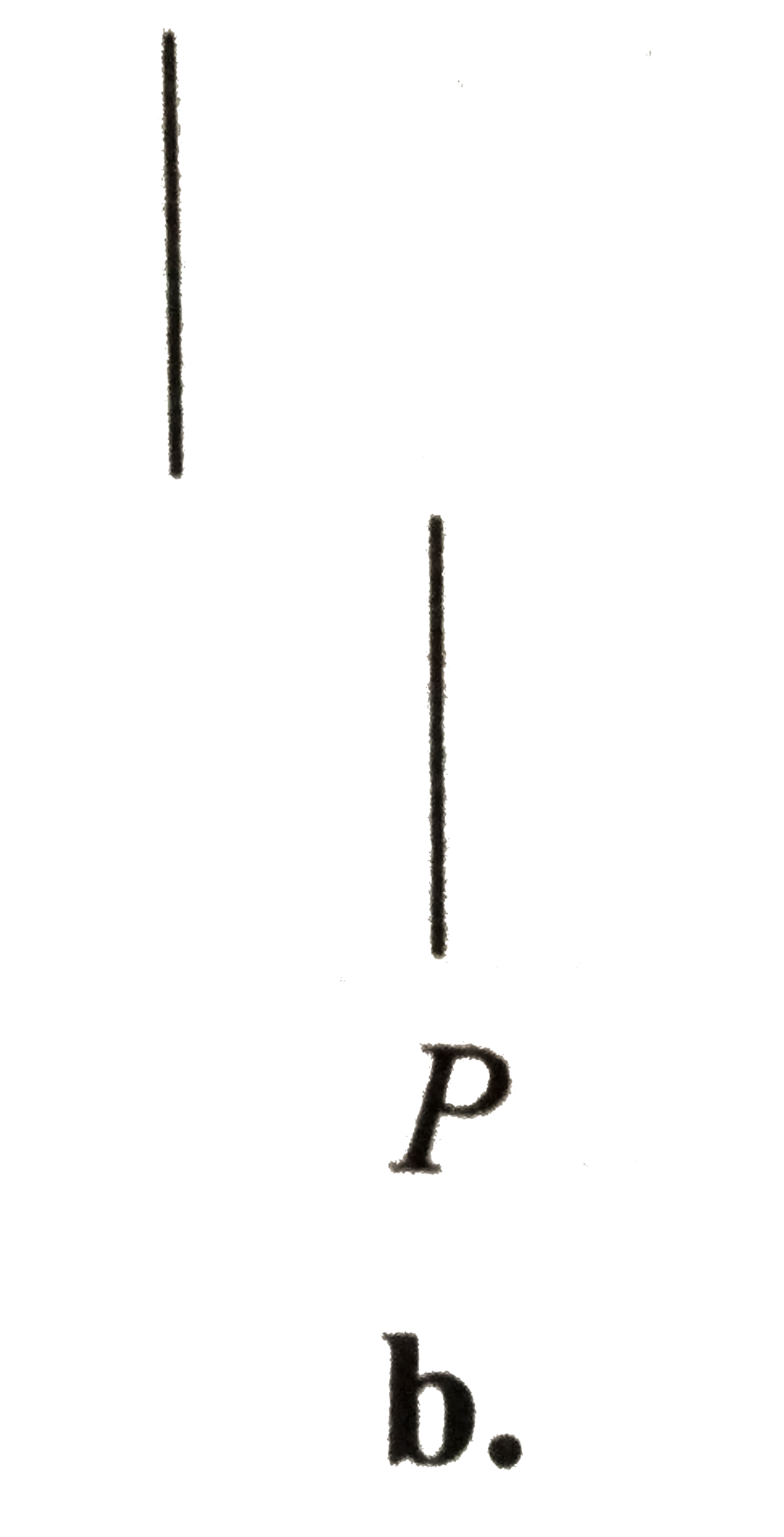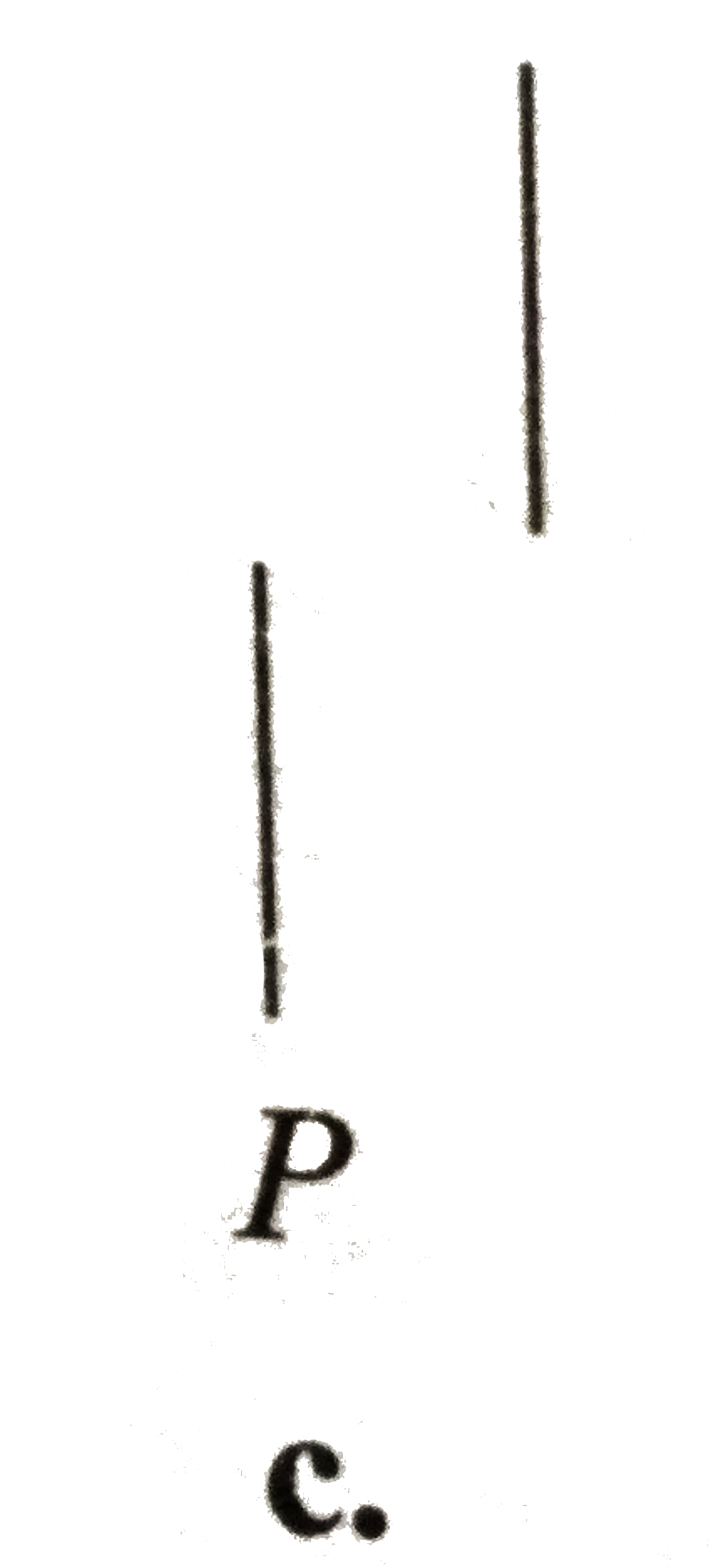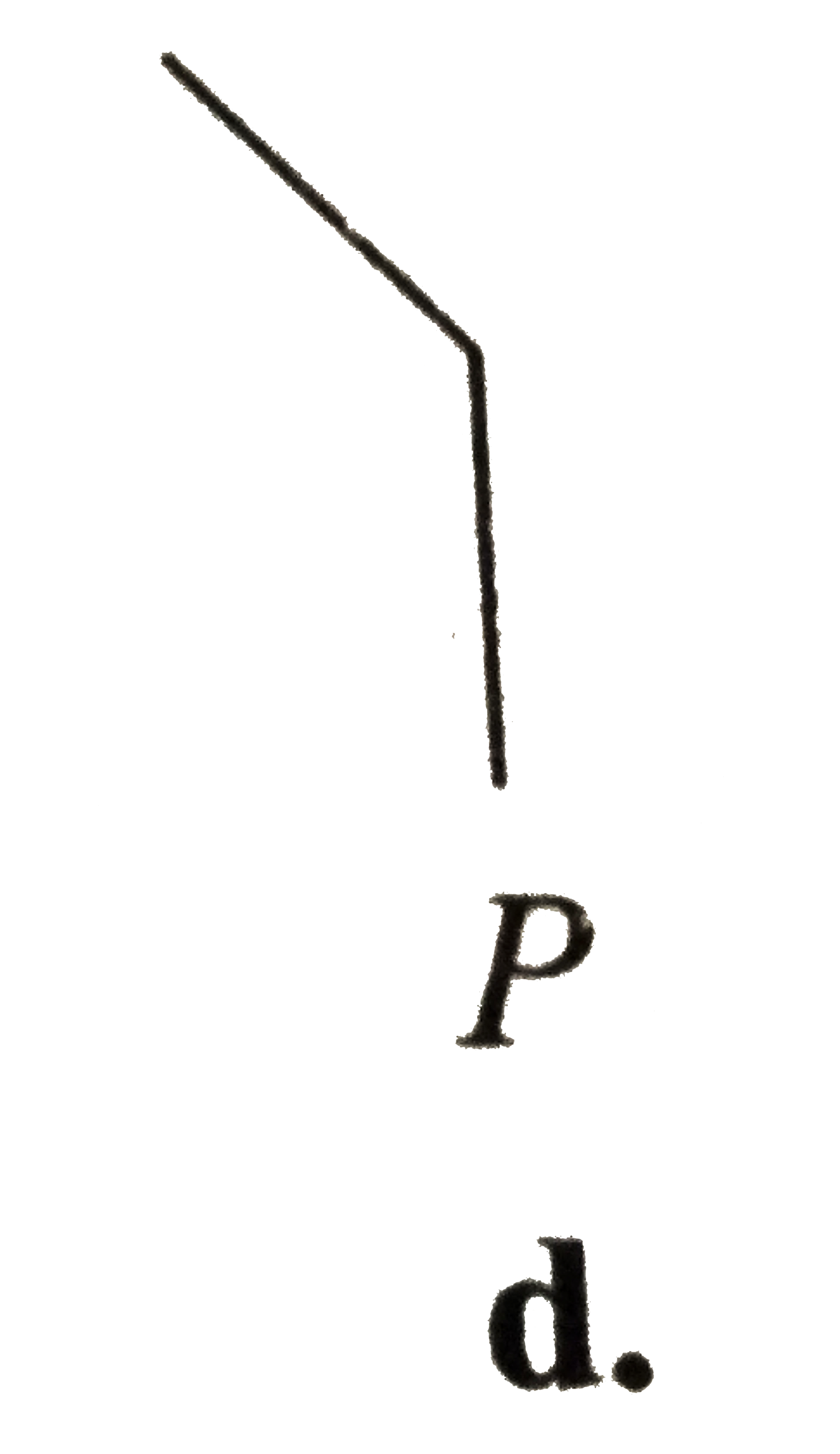A plane wavefront travelling in a straight line in vacuum encounters a medium ofrefractive index m. At P, the shape of the wavefront is





The correct Answer is:b
Velocity of wave in medium (μ) is less than that in air. Hence, wave front reaches earlier at P through air.
Topper's Solved these Questions
- BOOK - CENGAGE PHYSICS ENGLISHCHAPTER - WAVE OPTICSEXERCISE - Multiple Correct8videos
WAVE OPTICS
- BOOK - CENGAGE PHYSICS ENGLISHCHAPTER - WAVE OPTICSEXERCISE - Assertion- Reasoning13videos
WAVE OPTICS
- BOOK - CENGAGE PHYSICS ENGLISHCHAPTER - WAVE OPTICSEXERCISE - Subjective11videos
WAVE OPTICS
- BOOK - CENGAGE PHYSICS ENGLISHCHAPTER - SOURCES OF MAGNETIC FIELDEXERCISE - single correct Ansewer type12videos
SOURCES OF MAGNETIC FIELD
Similar Questions
A beam of light travelling with speed c in vacuum encounters a glass medium at an angle of incidence 60∘. If the speed of light in the medium is c√3, then the angle between the reflected and the refracted beams is :
View SolutionA plane wavefront is incident at an angle of 37∘ with horizontal a boundary of refractive medium from air (μ=1) to a medium of refractive index μ=32. Find the angle of refracted wavefront with horizontal
View SolutionAn object is approaching a fixed plane mirror with velocity 3 ms/s at an angle of 45∘ with normal, in a medium of refractive index 4/3. The speed of the image with respect to the mirror is __________m/s.
View SolutionIf light travels a distance of 5 m in a medium of refractive index μ, then equivalent path in vaccum it would travel in same time is
View SolutionA plane wavefront propagating from a rarer into a denser medium is incident at an angle of incidence i on a refracting surface. Draw a diagram showing incident wavefront and refracted wavefront . Hence verify Snell's laws of refraction.
View SolutionA thin lens made of a material of refractive indexμ2 has a medium of refractive index μ1 on one side and a medium of refractive index on the other side. The lens is biconvex and the two radii of curvature have equal magnitude R. A beam of light travelling parallel to the principal axis is incident on the lens. Where will the image be formed if the beam is incident from (a) the medium p, and (b) from the medium μ3?
View SolutionLight waves travels in vacuum along the X-axis. Which of the following may represent the wavefronts?
View SolutionTwo light waves having the same wavelength λ in vacuum are in phase initially. Then the first ray travels a path of length L1 through a medium of refractive index μ1. Then second ray travels a path of length L2 throug a medium of refractive index μ2. The two waves are then combined to observed interference effects. The phase difference between the two, when they interfere, is
View SolutionTwo light waves having the same wavelength λ in vacuum are in phase initially. Then the first ray travels a path of length L1 through a medium of refractive index μ1. Then second ray travels a path of length L2 throug a medium of refractive index μ2. The two waves are then combined to observed interference effects. The phase difference between the two, when they interfere, is
View Solution(i) Define term wavefront. State Huygen.s principle.
(ii) consider a plane wavefront incident on a thin convex lens. Draw a proper diagram to show him the incident wavefront traverses throught the lens and after refraction focuses on the focal point of the lens, giving the shape of the emergent wavefront.
(iii) When light travels from a rarer to a denser medium, it loses speed. Does, this loss imply a reduction in energy carried by the light waves.View Solution

